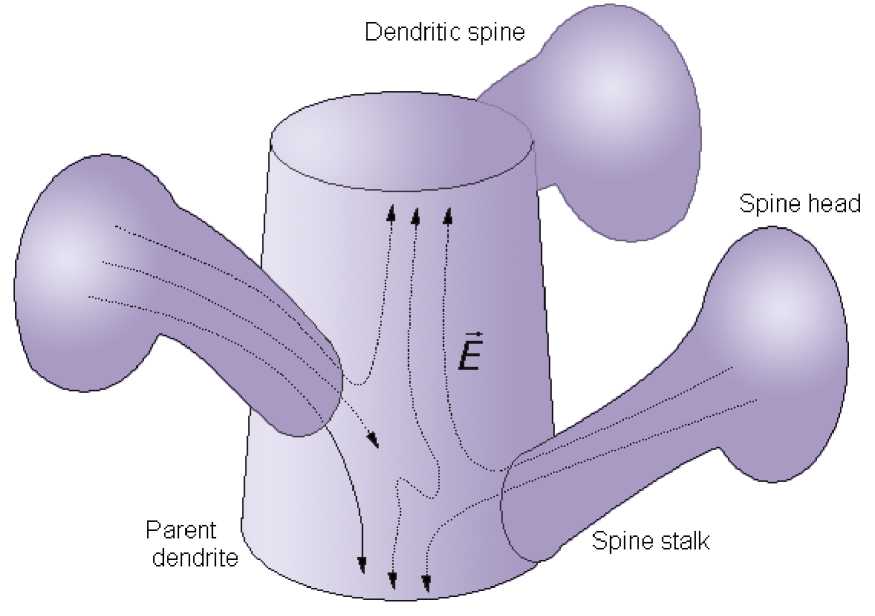If we consider that microtubules have acquired mechanisms for translating the
information from the electric impulses into specific quantum states then it is
demanded to find out a possibility for a microtubule to recognize from which
synapse (dendritic spine) the impulse is generated i.e. the geometric structure of
the dendritic tree must have specific meaning for microtubules. The vector of
electric intensity under the firing dendritic spines is not collinear with the axis of
the parent dendrite, therefore E is not collinear with the microtubular z-axis in
the parent dendrite and angle <ξ will be formed. Thus the electric field will be
carrier of information about specific firing points in the dendritic tree geometry.

Fig. 12 Distortion of the electric field under the dendritic spines. The E vector is
not collinear with the z-axis of the underlying microtubules under the firing spine
stalks. It gets collinear with the z-axis in the areas between two firing stalks
including the space under silent dendritic spines. Note: if there is IPSP the E
vector will point from the parent dendrite towards the spine head.
42
More intriguing information
1. The name is absent2. DEMAND FOR MEAT AND FISH PRODUCTS IN KOREA
3. Benefits of travel time savings for freight transportation : beyond the costs
4. The name is absent
5. The name is absent
6. Determinants of Household Health Expenditure: Case of Urban Orissa
7. An Efficient Circulant MIMO Equalizer for CDMA Downlink: Algorithm and VLSI Architecture
8. A Study of Adult 'Non-Singers' In Newfoundland
9. SOME ISSUES IN LAND TENURE, OWNERSHIP AND CONTROL IN DISPERSED VS. CONCENTRATED AGRICULTURE
10. Public Debt Management in Brazil